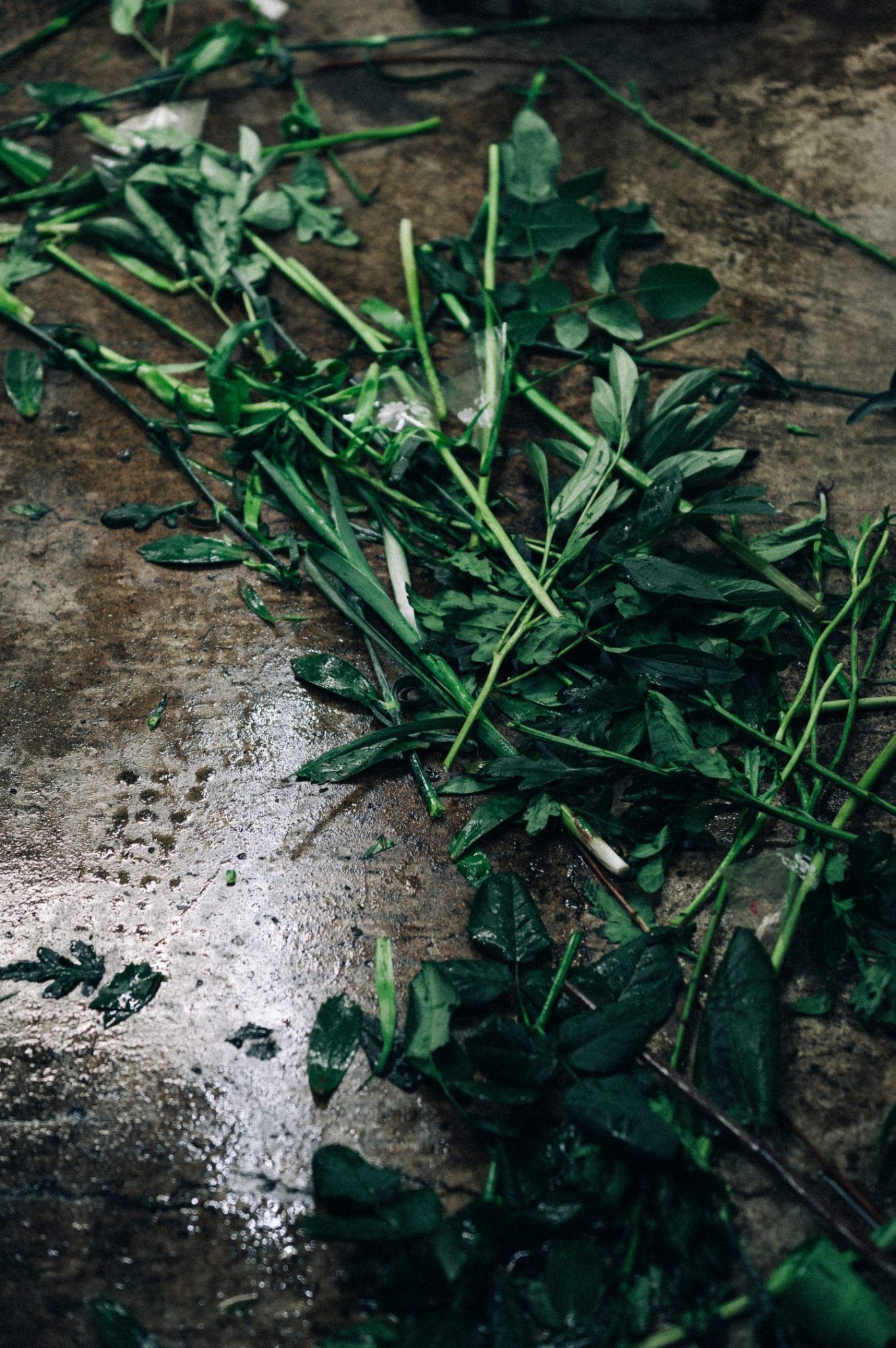Makoto Azuma and Shunsuke Shiinoki might’ve given up on dreams of becoming rock musicians, but they didn’t hang up their guitars. The pair, renowned for their vivid yet stark take on floral art, make up the bedrock of creative studio AMKK, but are more than just business partners.
Over the course of two days, the MAEKAN team followed the two high school friends as they practiced with their yet-to-be-named grunge rock band and went about their work day, creating original floral works and sharing more about their creative philosophy. We came away with both a deeper understanding of how AMKK works, and a drastically altered perspective of flowers that will stay with us for the rest of our lives.
Background
Archival Images from AMKK
“We travel a lot across the world, but even in conflicted regions, poor countries or rich countries, there’s always a florist… It means that for people the world over, they need flowers.”
— Azuma Makoto, AMKK

bonsai installation by AMKK titled, “Shiki I x Glacier.”
Shiki Tou
Grunge
In the Studio

Makoto and Shunsuke play grunge music once a week at a basement music studio in Shibuya, Tokyo.

Makoto playing his Fender Jazz Bass during band practice.

The lead singer and guitarist of Makoto and Shunsuke’s grunge band.
“What I get from punk is simply not being satisfied with the status quo… It makes me want to do something tomorrow that was better than what I did today”
— Azuma Makoto, AMKK

Makoto and Shusuke playing yet another rendition of “untitled.”

Shunsuke playing his Gibson Flying V electric guitar.

Botanical Art
Daily Process

A portrait of Azuma Makoto outside AMKK’s studio.



A portrait of Shiinoki Shunsuke outside AMKK’s studio.

Both Makoto and Shunsuke commute together to work.


AMKK’s studio in Minato, Tokyo.

This is what AMKK’s work area looks before the team ‘wakes up’ the flowers.

AMKK sources its fresh flowers from Ota Market, Japan’s largest flower and produce market.

Makoto experiments with a selection of flowers in his ‘green room’ to see how they fair in natural sunlight.

Makoto and Shunsuke take periodic breaks while they arrange flowers for only 20 customers per day.

Makoto and Shunsuke’s assistants a.k.a. “The Twins” from The Matrix Reloaded.

Makoto’s botanical experiments.
“Of course at the beginning when we started working with flowers, there weren’t many men. We did get mistaken as gay a few times.”
— Shiinoki Shunsuke, AMKK


Shunsuke often helps Makoto and their assistants with floral arrangements before shooting everything in his photo studio.


The making of MAEKAN’s “Bottle Flower.”

Makoto singes the ends of flower stalks to help preserve his creations.

Makoto uses an open-flame heater to keep his hand warm while working.

Eri, AMKK’s project manager, discusses an upcoming project with a colleague.
“It’s kind of ironic that by trying to fulfill very human desires… We create flowers with a human connection and keep using energy to do that. We’re at the point where we really have to think about how we treat energy use and flowers.”
— Azuma Makoto, AMKK

These bonsai installations are for sale at AMKK’s private gallery in Minato, Tokyo.
AMKK for MAEKAN

“Damned” Ikebana for MAEKAN.

AMKK “Bottle Flower” for MAEKAN.

AMKK “Whole” series floral arrangement for MAEKAN.
AMKK Archival Imagery

“Iced Flowers” by AMKK illustrates the evolution of flowers by preserving them in ice in order to interrupt their life cycle of bloom and decay.

AMKK’s “Petal Box” pop-up installation consisted of 10,000 bottles of flowers in full bloom. It stood in the windows of colette in Paris, France.

AMKK pays homage to a hand-painted masterpiece by Henri Matisse titled, “A Bouquet of Flowers in a White Vase 1909.





























